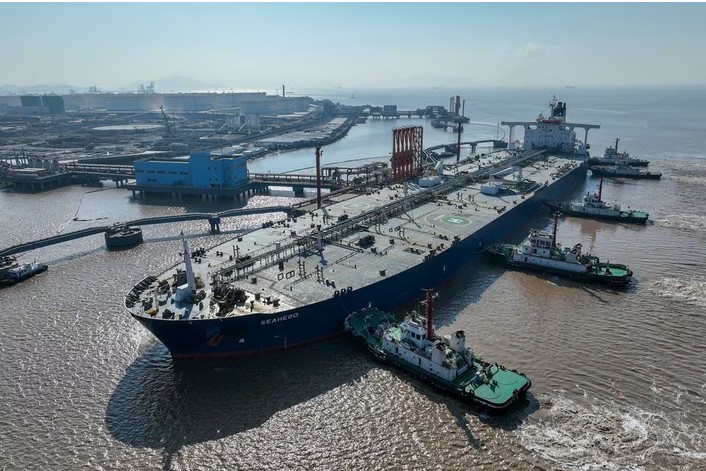The recent decision by OPEC+ on Oil Prices to implement voluntary oil output cuts in the first quarter of the upcoming year sent shockwaves through the oil market. This article delves into the aftermath of this decision, exploring the reasons behind the oil price fall and its potential ramifications.
Understanding the Numbers: Oil Price Plunge
As the market anticipated substantial cuts, oil prices saw a dip of nearly 2% following the announcement. Brent crude futures for January experienced a 0.3% drop, settling at $82.83 a barrel, while U.S. West Texas Intermediate crude futures fell by 2.5%, reaching $75.90. Delve deeper into the figures to comprehend the implications for the global oil industry.
Decoding OPEC+’s Move: Analyzing the Voluntary Cuts
Saudi Arabia, Russia, and other key OPEC+ members
responsible for over 40% of the world’s oil production
agreed to voluntary output cuts of nearly 2 million barrels per day (bpd)
for the first quarter of the upcoming year. However, the market reaction suggests that these cuts may not align with initial expectations.
Unpacking the Numbers: Extension vs. New Cuts
A significant portion of the agreed-upon cuts, approximately 1.3 million bpd
constituted an extension of voluntary curbs already in place by Saudi Arabia and Russia. Initial discussions hinted at additional cuts of up to 2 million bpd
leading to a market that felt shortchanged by the final decision. Explore the nuances of this unexpected outcome.
Investor Sentiment: The Voluntary Conundrum
The voluntary nature of the cuts left investors puzzled and questioning the effectiveness of the measures. Industry experts express their reservations
with Callum MacPherson, head of commodities at Investec, stating that the outcome fell short of recent expectations. James Davis at FGE raises concerns about the actual impact of the cuts, painting a picture of a market on the brink.
Looking Ahead: Gradual Unwinding and Global Expansion
Key players, including Saudi Arabia, Russia, Kuwait, Kazakhstan, and Algeria, assure that the cuts will be gradually unwound after the first quarter, contingent upon market conditions. Simultaneously, the meeting coincides with global leaders convening for the U.N. climate conference, highlighting the intersection of economic decisions and environmental concerns.
Brazil’s Invitation: Expanding OPEC+ Membership
In a surprising move, OPEC+ extended an invitation to Brazil, a major oil producer, to join the group. Brazil’s energy minister expressed optimism about joining in January. This development adds a layer of complexity to the ongoing dynamics within OPEC+.
U.S. Counterbalance: Rising Crude Output
While OPEC+ grapples with output decisions, the U.S., the world’s top oil producer, continues to witness a surge in crude production. The Energy Information Administration reports a 1.7% increase in September, reaching a record 13.24 million
Regional Spotlight: Texas and the Oil Balancing Act
Zooming in on Texas, a key player in U.S. oil production, we examine the factors contributing to the state’s production fluctuations. The delicate balance between maintaining production levels and adapting to market conditions underscores the challenges faced by individual states within the larger oil-producing landscape.
Strategic Decisions: OPEC+ and the Q1 Cut Unwind
The commitment to gradually unwind cuts after the first quarter introduces a strategic element to OPEC+’s decision-making. This section analyzes the factors that will influence the pace and success of this unwinding process, shedding light on potential market outcomes.
Conclusion: A Dynamic Landscape Beckons
In conclusion, the aftermath of the OPEC+ decision propels the oil market into a dynamic and uncertain landscape. The delicate dance between economic considerations, environmental responsibilities, and geopolitical complexities will shape the future of global oil dynamics. As we move forward, staying attuned to these intricate factors will be key to understanding and navigating the evolving narrative of the oil industry.
FAQs: Unveiling Further Insights
- How do geopolitical factors influence OPEC+’s decision-making processes?
- Geopolitical factors, highlighted by the timing of the decision amid global climate discussions, underscore the intricate balance OPEC+ must strike between economic interests and environmental responsibility.
- What are the potential environmental implications of OPEC+’s voluntary cuts?
- The voluntary cuts signal a recognition of environmental imperatives, but their effectiveness in contributing to global climate goals remains a subject of scrutiny.
- How might Brazil’s entry into OPEC+ reshape the global oil alliance?
- Brazil’s potential entry introduces a new dimension to OPEC+, potentially reshaping alliance dynamics and influencing future oil-related decisions.
- What role does investor sentiment play in shaping the oil market’s future trajectory?
- Investor sentiment, influenced by the perceived effectiveness of OPEC+ measures, can significantly impact oil prices and market stability.
- How can individual states, exemplified by Texas, navigate the delicate balance in oil production?
- State-level dynamics, particularly in Texas, highlight the challenges faced by regions in maintaining production levels while adapting to the evolving global oil landscape.

